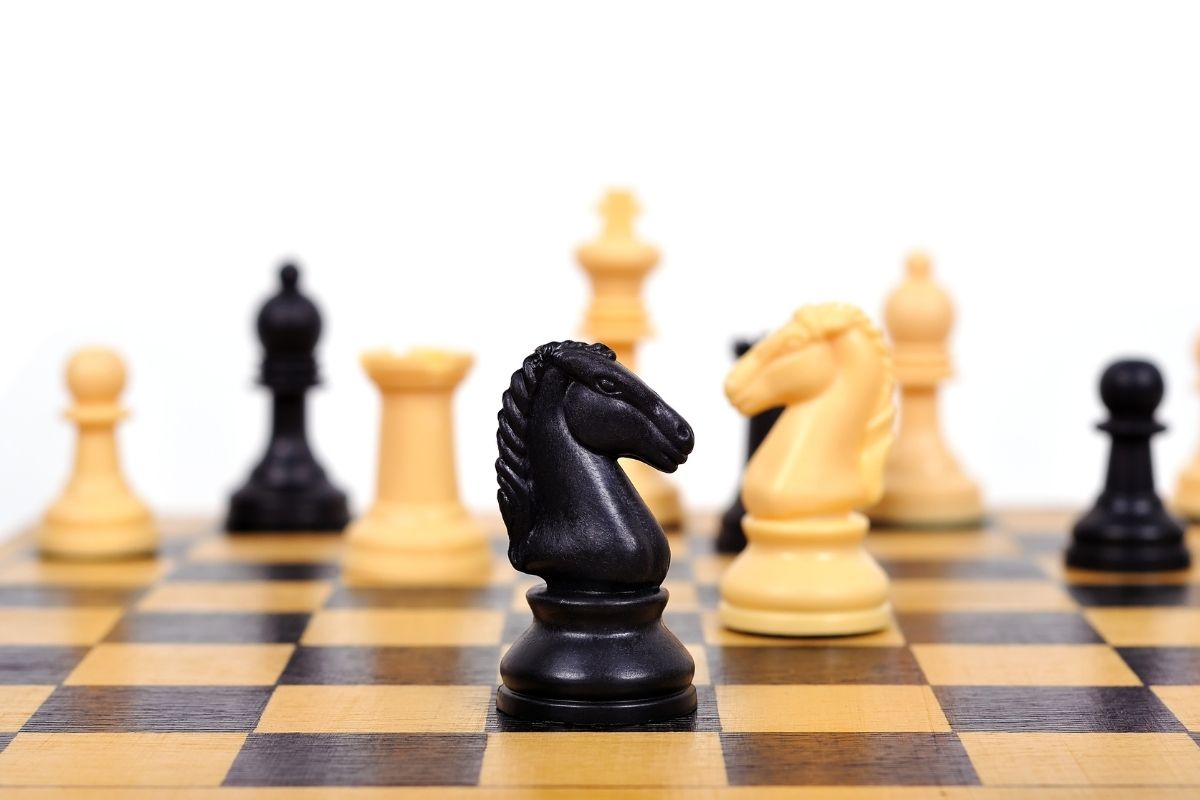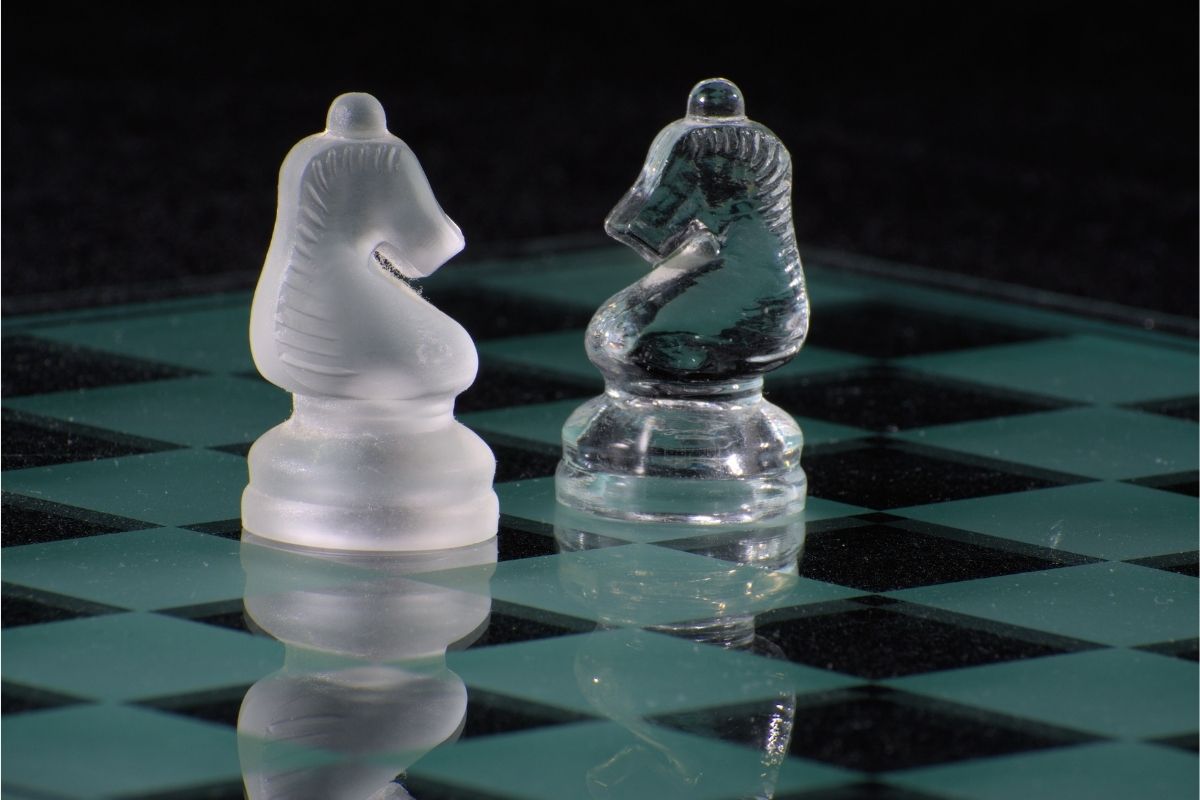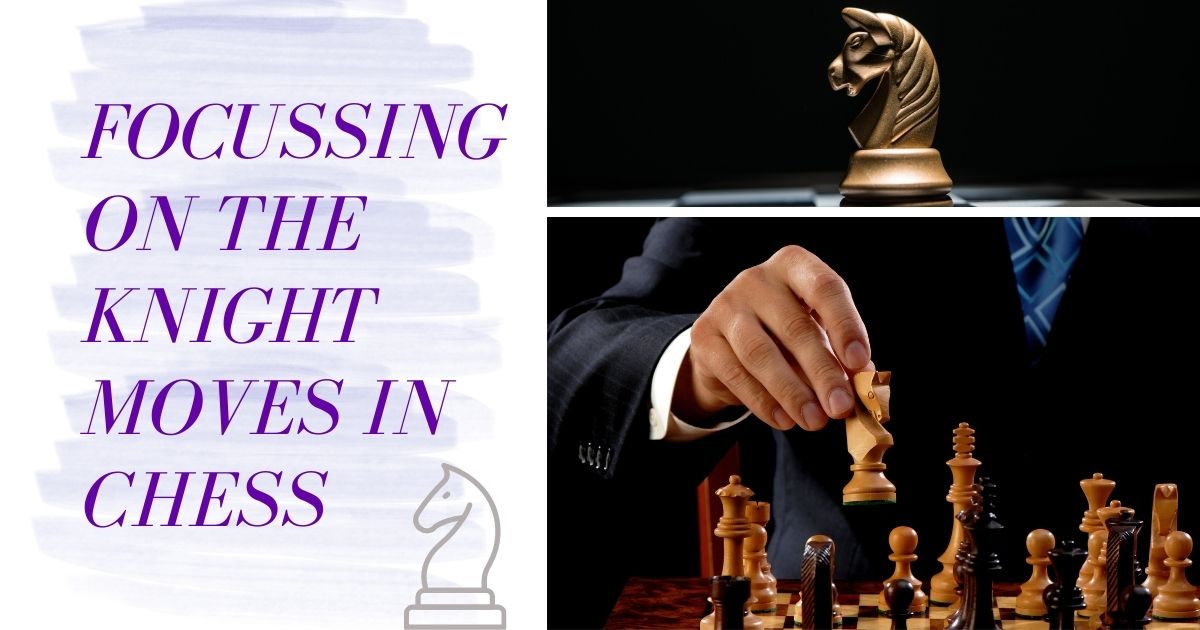The Knight in Chess
The knight is a piece in the game of chess. The knight moves in chess are unique because they can either move two squares vertically and one square horizontally or two squares horizontally and one square vertically, hopping over the other pieces.
Chess knight movement can be challenging for many if you are one of them. Keep on reading to learn.

How Does the Knight Move in Chess?
In this section, you are going to gain an understanding of how a chess knight moves. On the chess board, a knight moves numerous squares in each move, either upwards or downwards, one square vertically and over two squares horizontally.
One more unique feature of the knight is that it alternates between two colors. If it starts on a light square and makes a legal move, it always ends on a dark square. If it starts on a dark square, it always ends on a light square. The movement opposes a bishop, which plays in one square color for the whole game.
The knight can jump over the pieces, unlike any other piece. White’s knight on the b1-square can jump over the pawns on the second rank and move to the squares a3 or c3. It would be unable to move if it were any other piece, as it would find a block on all sides of the chess board. Read our article and find out how to set up a chessboard.
Legal Knight Moves in Chess
One of the legal knight moves on a chess board, as you have learned in the previous section, is that it moves in an L shape direction which is that it either moves two squares sideways and one square up or down and then one square.
Tactics on How to Use Knights
However, every chess game is distinct; few fundamental knight assumptions can improve your strategy and make you a better chess player.
- Take advantage of the forks. The chess knight’s unique movement makes it well equipped to execute a fork, which occurs when your piece attacks two of your opponent’s pieces simultaneously.
If you are controlling a black knight, for example, there is a possibility of attacking the white king and queen simultaneously, even if those pieces are far apart from one another.
- Beware of traps. Knights are vulnerable to traps because a fixed number of movements bind them. If a knight is on a light scare, its next move must be on a dark square. In this case, it would be especially susceptible to a dark-squared bishop cutting off the number of squares a knight could occupy.
- Occupy the center of the board. Knights have a small range of possible moves and can only move three spaces simultaneously. For that reason, knights are most effective when they engross the center of the board, as a center maximizes the number of possible moves a knight can make.
- Develop your knights early enough. Chess players like to come up with knights early. In fact, you can develop a knight chess piece before your own pawns to establish early control of the center of the board. A white knight move can be the first move of the game. Knight moves occur before the queen moves.
- Look for outposts. Knights are most important in the center of the board and where they are most vulnerable to attack from your opponents’ pieces. It is always wise to look for areas of the board towards the center that your opponents’ pawns cannot attack easily.

Can a Knight Move Backward in Chess?
Most chess beginners always ask this question as far as a chess piece is concerned. The answer is undoubtedly yes. In a chess game, all chess pieces move backward except for the pawns.
When playing a chess game, it’s essential to understand how each piece moves. There are different ways in which chess pieces move backward, and its as follows:
- A knight in chess moves backward so that it can maneuver its way into an active outpost. In addition to that, knights also move backward to move to the first rank to fight incoming threats.
- Bishop moves backward, though it can only move in a diagonal path that stays fixed to the one that is locked on.
- A king moves backward one square at a time and also moves backward when a standard evasive action avoids checkmate.
- In a straight line, a queen moves backward the same way it moves forward in either a diagonal, horizontal, or vertical path.
- Another piece is a Rook which moves backward in a straight horizontal or vertical line.
- A pawn is also one of the knight chess pieces which can only move backward if promoted into a queen after reaching the first rank on the opponent’s side.
Chess Rules for the Knight Piece
In this section, you will discover the chess rules of knights to avoid making mistakes while using the knight. The knight moves unconventionally compared to other chess pieces. Using the other pieces, they move straight lines to form an L pattern.
Therefore from the pattern that it forms, it means it can move two squares in any direction vertically followed by one square horizontally, or two squares in any direction horizontally followed by one square vertically.
The following are general rules to make you become a good player in the game of chess:
- Try as much as possible to get many pieces in action.
- Always avoid overextending with pawns, move the pieces and reposition and only move the pawn if you must.
- Not every position on the chess board calls for an attack on the king. Many games are won through other means, so be careful to consider your opponent’s weakest spot and concentrate on it.
- If your king is under attack, don’t rush to push pawns by it or instead open its position up. Times keeping it closed will suffice its protection.
- When behind the material, avoid piece trade and accept pawn trades. As long as you have pieces, you have chances to defend and also attack, but with fewer pieces on the board, the harder it will be for you. If you are up to the material, do the opposite.
- On the guard rule, it can save you pieces! Make sure you try to guard all your pieces at least once, or unless you are capturing, it’s a forcing move like a check. When you leave pieces unguarded, you give the possibility for tactical combinations to exploit them!
- Be cautious when considering all trades! If your opponents have a lame-duck bishop restrained by its pawns and a knight stands mightly on an outpost into the enemy’s camp, why trade it? Active pieces are best left untraded unless a specific tactical combination comes up from trading them.

Final Thoughts
With all the information from this article, you now know where to place the knights when a game starts, how a knight moves in chess, the general rules of chess, and the tactics of how to use a knight. Enjoy your new knowledge as you attack your opponents.

